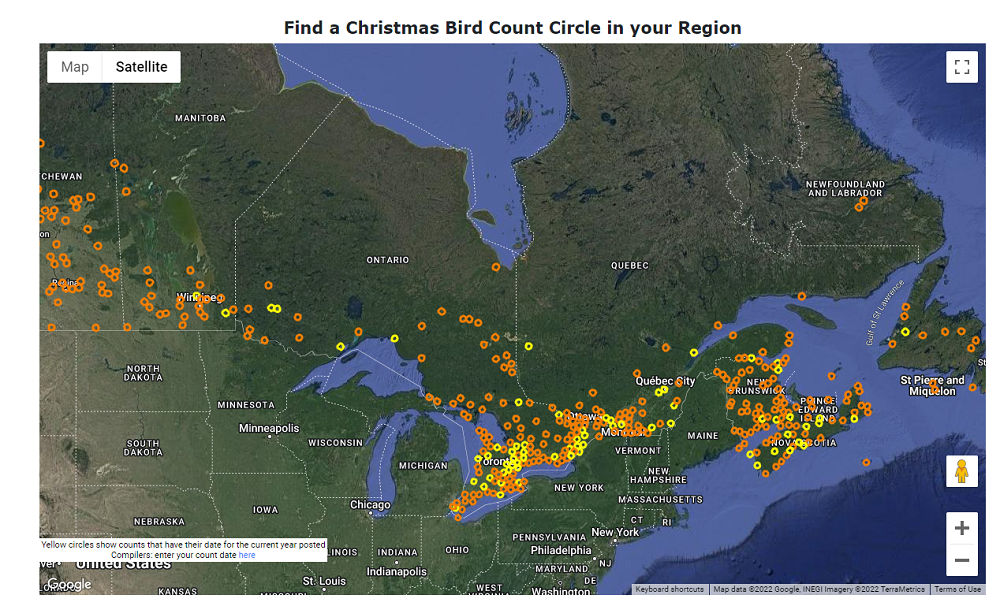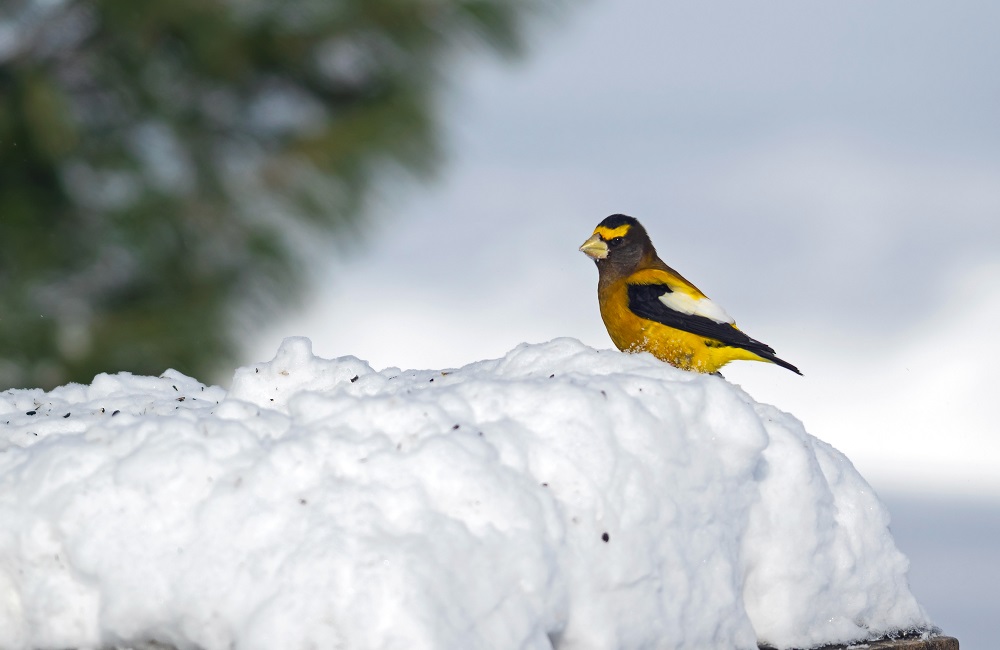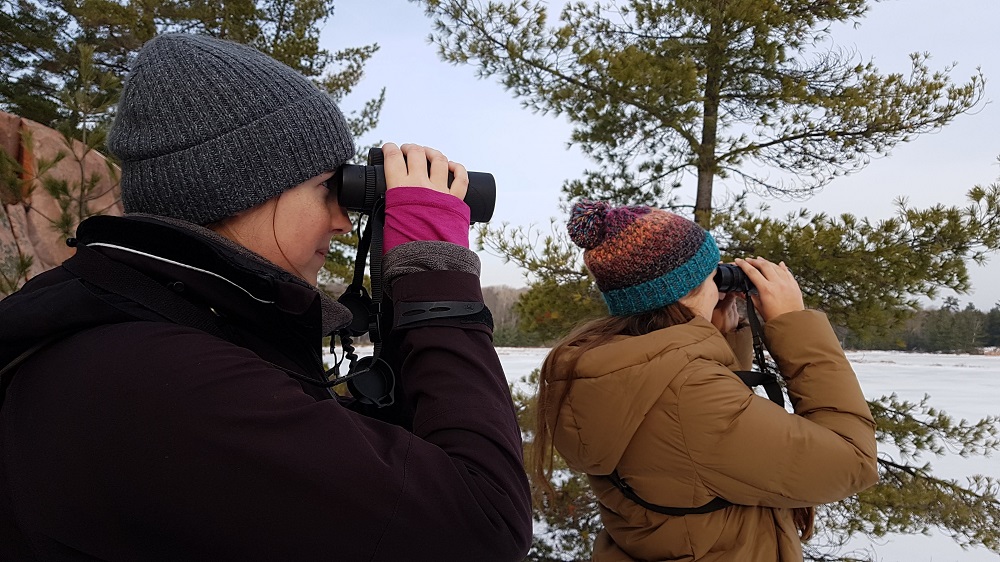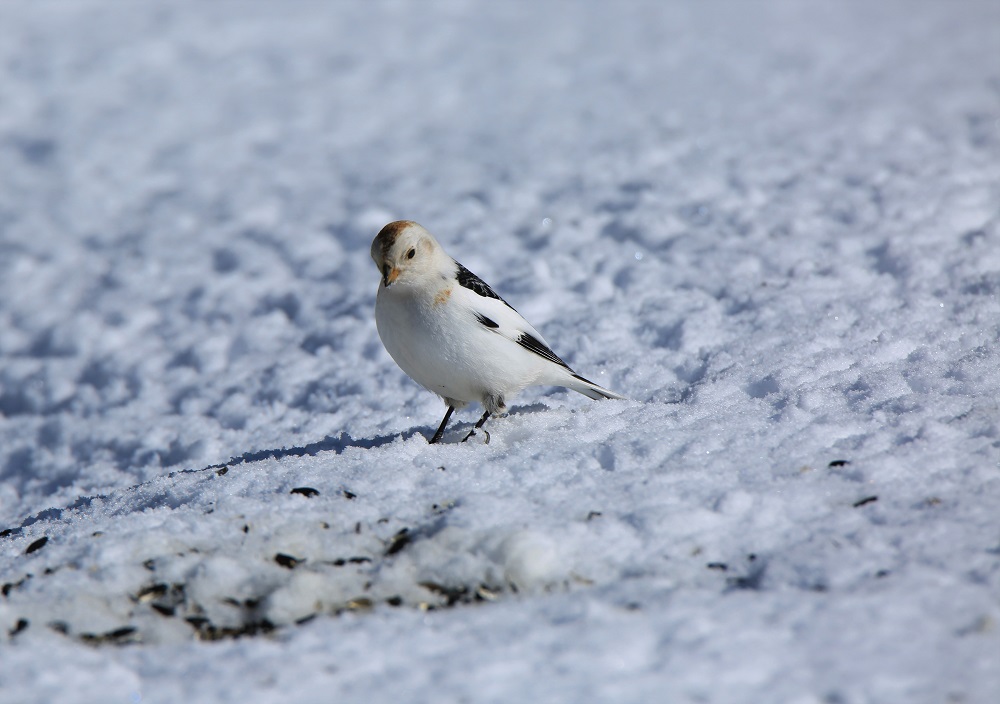Today’s post comes from Cortney LeGros, the Healthy Parks Healthy People coordinator at Ontario Parks.
The holiday season is steeped in tradition.
No matter how you celebrate, there’s one scientific tradition that’s been around for over 120 years to help mark the holidays.
For me, the holidays would not be complete without participating in at least one Christmas Bird Count.
For over a decade, my tradition includes preparing a thermos of hot chocolate to keep warm in the early dawn hours and tucking too many holiday snacks into my day pack.
(Typically I drink my hot chocolate before we arrive at our first location to chase away the early morning chill.)
As we take turns breaking trail, the warmth we sought starts to finally creep in.
While most of my day is spent with only a few people, the comradery that happens during the final tally is by far my favourite part. Sharing dinner, stories, and tallying the day’s bird sightings with people who come together once a year is my tradition!
So what exactly is a Christmas Bird Count, who counts the birds, and why is the count so important?
An introduction to the Christmas Bird Count
Since 1900, the Christmas Bird Count (CBC) happens on one day between December 13 and January 5 in thousands of locations across North America.
Last year, there were more than 450 counts, with an excess of 15,000 volunteers in Canada alone!
It all began as a holiday hunting tradition known as the Christmas “Side Hunt,” shooting feathered and furred animals alike.
As scientists were starting to become more concerned about declining bird populations, ornithologist Frank M. Chapman proposed a new tradition: a “Christmas Bird Census.”
Instead of hunting birds, he proposed counting them.
Since that Christmas day in 1900, bird counts have been taking place across North America to monitor the long-term health and status of bird populations.
Each area selected is called a “count circle.” This is a 24 kilometre diameter circle that stays the same from year to year.
Observers commit most of the day counting all the birds that they see in a portion of the circle or set up a count at a bird feeder station. The data is then sent to the compiler, the person responsible for tallying and submitting all the records for their circle.
Importance of data
Other than getting outside to enjoy a refreshing walk and meet up with old friends, why are Christmas Bird Counts so important?
The data collected by volunteer observers over the past century has allowed researchers and organizations like Ontario Parks to learn about the long-term health and status of bird populations.
These long-term data sets inform management decisions that help protect birds and their habitats. We’ve learned so much from population trends and have been able to make important decisions that affect the health of the birds and the health of our parks.
Consider what we’ve learned from counting the following species:
1. Bald Eagle
Spotting a Bald Eagle was once extremely rare.
A variety of factors such as habitat loss, hunting, and the use of certain pesticides caused the Bald Eagle population to plummet. In 1970, there were fewer than 10 breeding pairs of Bald Eagles in Ontario.
The largest population decline came with the use of DDT, which resulted in thin eggshells that would break when adults tended to them. DDT use was phased out in Canada by the mid 1980s and Bald Eagle populations began to recover.
There are now an estimated 1,400 breeding pairs in Ontario today.
Thanks to the effort of Christmas Bird Count volunteers, we have accurate data on the overwintering population and distribution of these majestic birds.
This information helps to inform management decisions, such as the protection of important overwintering habitat.
2. Winter finches
We often get asked, “Where did all the birds at my feeder go?”
One year, it seems like the feeders are overrun with finches, and the next year, they have all but disappeared. So are these birds in decline?
Actually, winter finches, such as
- Pine Grosbeak
- Purple Finch
- Common Redpoll
- Hoary Redpoll
- Pine Siskin
- White-Winged Crossbill
- Red Crossbill
- Evening Grosbeak
are known as “irruptive species.” An irruption occurs when large numbers of birds migrate further south than they normally would, often in search of food.
There are a variety of factors that can help predict an irruption year, and there is an entire network dedicated making a winter finch forecast.
Using a community science network, volunteers collect a variety of data, including the presence of summer tree cone crops that help contribute to a prediction of how many, what types, and where finches might spend the winter.
Irruptions of finches can help us determine and protect the health of our forests.
Tree species produce varying seed crops from year to year and from place to place. However, things like climate change can affect these cycles, with extreme events such as early or late frosts, wet years or drought years, and insect and disease outbreaks.
Monitoring finch numbers not only in Ontario, but across the country, will help us understand the population numbers of these species as well as their unique migration patterns.
Health benefits of birdwatching
There are many benefits to participating in a Christmas Bird Count, from taking part in stewardship of parks and contributing to data that supports management and conservation decisions to the personal health benefits that come along with time spent in nature.
Birding is beneficial not only to our own mind and body but helps contribute to healthy parks too. Check out this blog for more on the health benefits of birding!
Who can participate?
Volunteers are essential to the Christmas Bird Count!
Counts are typically a group effort and organized locally by naturalist clubs or birding groups.
Each year, thousands of volunteers get bundled up in warm layers to take part in the effort to collect data across North America.
Looking for some tips on how to stay warm? Check out this winter preparedness guide!
Here in Ontario, there are over 100 counts with almost 4,000 volunteers taking part. Many counts are organized by Friends groups and local naturalist groups, with a handful of counts organized by park staff.
Several count circles overlap park boundaries, and Ontario Parks is proud to support the work of many local volunteer organizations.
Here are a few counts taking place in and around parks:
- Bon Echo Provincial Park
- Count Circle: Bon Echo Provincial Park
- For more information: Bon Echo’s events page
- MacGregor Point Provincial Park
- Count Circle: Saugeen Shores
- For more information: Huron Fringe Birding Festival
- Killarney Provincial Park
- Count Circle: Killarney Provincial Park
- For more information: Birds Canada
- Pinery Provincial Park
- Count Circle: Kettle Point
- For more information: The Friends of Pinery Park
- Rondeau Provincial Park
- Count Circle: Blenheim
- For more information: Birds Canada
Get involved
The data collected would not be possible without the dedication of organizers, compilers, and volunteers like you.
If you are interested in making a bird count part of your holiday tradition, please visit Birds Canada to find a count near you.
Contact the compiler listed for your count circle to find out how you can participate.
You don’t need to be an expert birder!
There are some great resources available to help you discover birding.
What are you waiting for? Get involved today!











